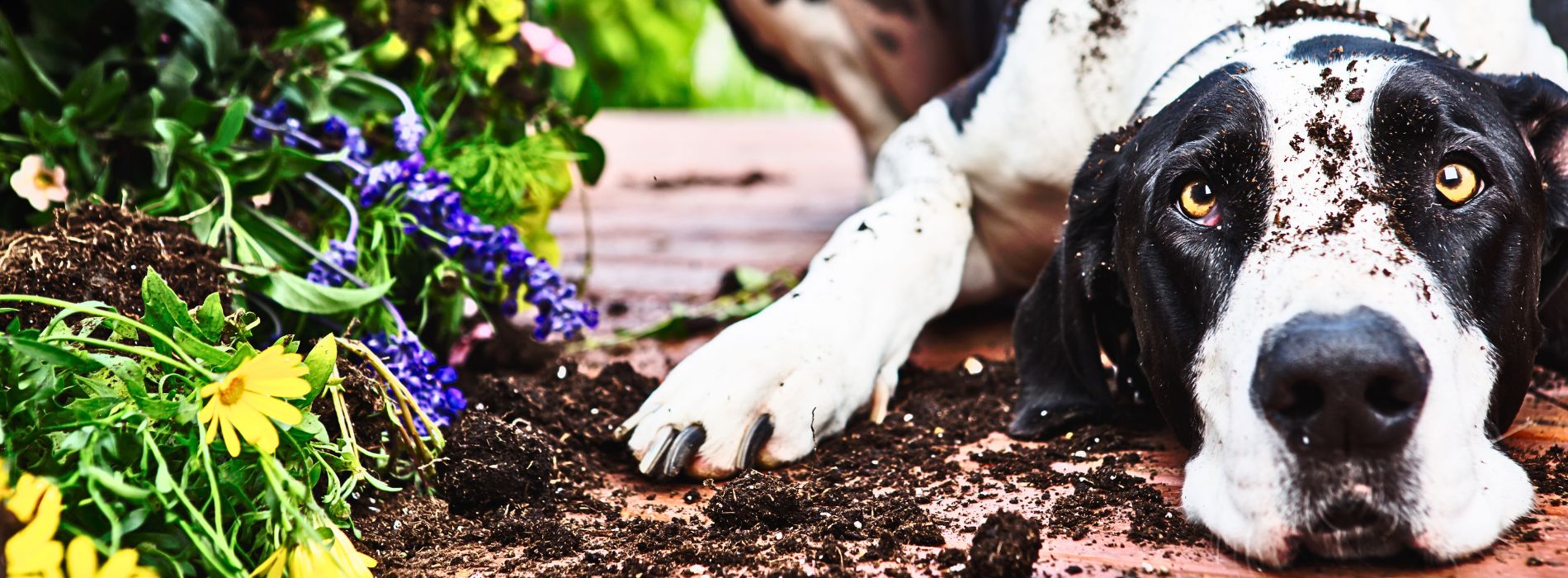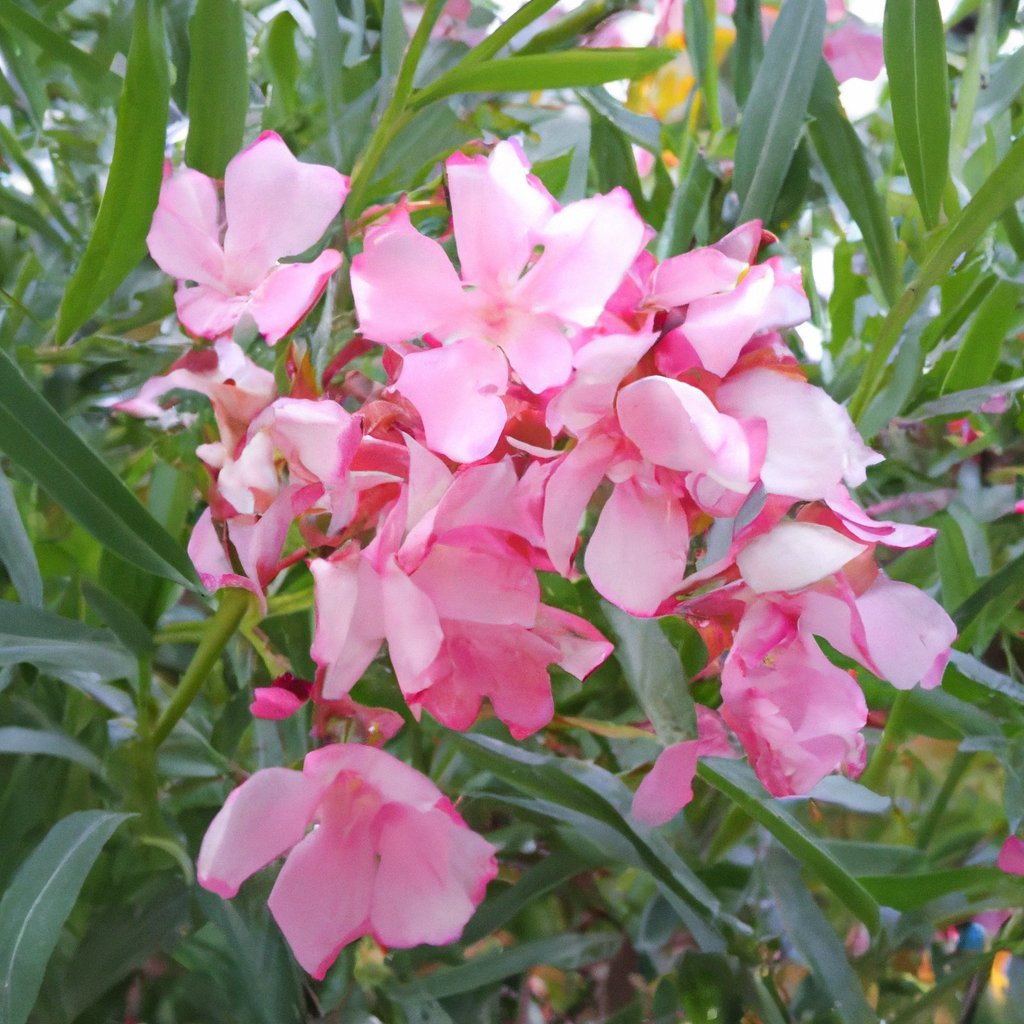What Plants Are Poisonous to Dogs? Pet-Friendly vs.Toxic Plants: A Complete Guide
What is Plant Toxicity in Dogs?
Dogs can become ill or die from eating poisonous plants. The most common type of plant toxic to dogs causes serious issues. The toxicity of these plants can vary depending on the type and amount consumed and the dog’s age, size, and health.
In other words, the garden is the perfect place for dogs to explore, sniff and dig. The relationship between dogs and plants goes beyond explanation.
Dogs can become ill or die from eating poisonous plants. The most common type of plant toxic to dogs causes serious issues. The toxicity of these plants can vary depending on the type and amount consumed and the dog’s age, size, and health.
You might wonder, “Are snake plants toxic to dogs?” Knowing the top 10 poisonous plants that could harm your dogs and cats is important for a responsible pet owner. These plants should be avoided, as they can cause harm if ingested or sniffed. Surprisingly, many of these plants can be found in your backyard! On the other hand, we’ll also provide a list of safe and friendly houseplants for your pets to enjoy. Look at the list of harmful and non-toxic plants to keep your furry friends safe.
What is a Dog’s Sense of Taste and Plants?
Dogs have a less sophisticated sense of taste than humans. They can detect sour and salty flavours, but they cannot see sweetness.
The dog’s sense of smell is much more developed than its sense of taste. It means dogs are likelier to eat something if they smell rather than taste it. It can be a problem because some plants are poisonous to dogs and can cause death if consumed in just a few hours.
What might be the most popular shrubs that are toxic to dogs?
Azalea and Rhododendron
These plants are generally hazardous for dogs to consume, and they should avoid them. Eating even a few leaves can result in serious problems such as vomiting, diarrhea, drooling, paralysis, shock and coma.
Christmas Holly
Many types of holly have varying toxicity levels that are compatible with green plants. English and American holly are the least toxic, but Japanese and Christmas holly are known to cause vomiting, diarrhea, and inflammation around the stomach.
Hydrangea
Hydrangea is a genus of flowering plants known to be toxic to dogs. The high concentration of harmful substances in the flowers and leaves makes this plant dangerous for dogs. Hydrangea contains carcinogenic glycosides, which can cause lethargy, diarrhea, vomiting, and other gastrointestinal upsets.
Ivy
Ivy is a plant that grows as a climbing vine and is used to cover fences or walls. The Ivy leaves are quite poisonous to pets, mainly dogs, and can have devastating consequences when ingested. Ingestion can lead to excessive drooling and vomiting, diarrhea, swelling of the mouth, and breathing difficulties.
Oleander
The Oleander is a beautiful ornamental shrub in public gardens and private yards worldwide. In recent years, using these shrubs as hedges has become popular. Unfortunately, all parts of this plant are toxic to humans and pets. The leaves and flowers are incredibly toxic – if your dog ingests these flowers or leaves, they can experience extreme vomiting.
Peony
Peonies are beautiful to look at but can harm our furry friends. The toxin phenol is found in the plant’s bark and may cause vomiting and diarrhea in dogs who ingest it.
Sago Palm
Many plants are considered toxic to animals, and the Sago Palms are no exception. This plant thrives in various climates and can be found outdoors as an ornamental shrub in temperate zones. According to the Dog Trust Organization, the sago palm plant is highly toxic to dogs and humans.
What Types of Trees Are Poisonous to Dogs?
Black Walnut
Dogs are typical victims of black walnut tree nuts because the nuts are so ubiquitous. The trees are generally not dangerous, but they are the most poisonous plants for dogs. The American Kennel Club states that its nuts can cause serious issues if a dog ingests them. They produce mould, which causes digestive upset and can even be fatal.
China-Berry
Otherwise known as the Amur chokecherry (Prunus maackii) is native to northeast Asia and Siberia. Botanists and toxicologists have studied this plant extensively, but its toxicity is known to be very toxic. Dogs may be at higher risk of poisoning because they are more likely to eat the plant, while humans are more likely to encounter it by touching their skin or inhaling the flowers.
Symptoms of Amur chokecherry toxicity in dogs include drooling, vomiting, diarrhea, abdominal pain, and rapid heart rate. The symptoms can vary from 3 to 16 hours after ingestion of the plant. Other side effects may be muscle spasms (with seizures), reduced appetite, increased thirst, and laboured breathing.
Dogs should not be given anticonvulsant drugs such as phenobarbital with this plant toxicity due to its potential to cause a significant increase in seizures. If your dog has been exposed to this plant and has shown signs of toxicity, it may be wise to contact your veterinarian.
Fruit Trees
Fruit trees are essential to the ecosystem and provide food for humans, animals, and insects. But fruit trees can be poisonous plants for dogs. Tree fruits, such as apricots, peaches, and plums, can be problematic for humans to digest. According to AKC, these fruits often cause intestinal blockages. Apple seeds contain toxins that can make your dog sick and are also a choking hazard.
Horse Chestnut (Buckeye)
The horse chestnut, or buckeye, is a large tree traditionally planted in North America for ornamental purposes. The Buckeye tree contains saponin, which causes vomiting & diarrhea, constipation, dilated pupils, and problems with the central nervous system. These are all severe conditions that can lead to coma in dogs.
Japanese Yew
The Japanese Yew is an evergreen tree that belongs to the Taxaceae family and can grow to heights of up to 40 meters. The Japanese Yew is native to Japan and Korea and is called “yew” in Korean. This tree has a long history as a popular ornamental plant. Still, because of their ability to produce some hazardous toxins, they should be planted with great care, and only in a well-drained garden do these plants contain toxic elements that may be fatal to dogs. Symptoms include trouble breathing, vomiting, tremors, and seizures. They are popular holiday decorations because of their vivid green leaves and red berries.
Other Nut Trees
Dogs can be allergic to many things, including various nuts. The most common response to nut ingestion is gastric upset. It can range from mild vomiting or diarrhea per day to severe vomiting and diarrhea with abdominal pain and fever in some cases.
7 Plants That Are Poisonous to Dogs
Lantana
Lantana plants are common weeds in many parts of the world. They can grow in gardens, parks, and even on sidewalks. The Lantana plant is native to South America but has spread through human activity to other parts of the world.
The Lantana plant is poisonous because it contains several toxic chemicals for humans and animals. At least six different toxins can irritate the skin and cause nausea, vomiting, headache, dizziness, and even death if consumed in large amounts.
Lantana plants grow in various climates and can reproduce by seeds or runners that spread from the parent plant.
Wisteria
Wisteria is a type of plant that is poisonous to dogs.
The wisteria plant contains toxic substances that can prove fatal for dogs. The wisteria plant’s leaves, flowers, and berries contain a chemical called “wisteria,” which is poisonous to dogs.
Symptoms of poisoning in dogs include vomiting, diarrhea, seizures and comas. These symptoms are often only seen hours after exposure to the plant. These symptoms are often only noticed hours after exposure to the plant. If your dog has eaten the wisteria plant, contact your vet immediately.
Oleander Plant
According to the American Kennel Club, Oleander is a poisonous plant in many countries worldwide. It is a beautiful flowering plant with dark green leaves, pink or white flowers, and clusters of red berries.
When ingested, this plant is deadly to dogs. They may experience vomiting, diarrhea, tremors, seizures, and even death. If you have an oleander houseplant in your home or office and pets at home, it is crucial to keep them away from the plant at all times.
Boxwood
Boxwood is a popular houseplant that can be toxic to dogs. The Boxwood contains Thujone, which is poisonous to the liver and can lead to seizures. Unlike other plants with a type of Thujone, Boxwood is not usually dangerous unless an untreated or prolonged exposure occurs. We should keep our boxwood plants from dogs and children out of reach because they are more susceptible to toxicity than adults.
Colocasia & Elephant Ear
Colocasia is a perennial plant in the same family as the taro, elephant ear, and dahlia. Some varieties of colocasia are toxic to dogs, while others are not.
It is essential to know that all parts of colocasia plants are toxic for dogs, but some varieties are more harmful than others. Dogs who eat this plant can experience symptoms like vomiting, diarrhea, and abdominal pain. If untreated, these symptoms can become life-threatening.
Elephant ear plants belong to the same family as colocasia and taro plants. Both of these plants can be poisonous to dogs if they consume them in large quantities or if they come into contact with their leaves or flowers.
Daffodil & Hyacinth
Daffodil is toxic for dogs and can harm them when consumed. Daffodils contain a toxin called lycorine which can cause vomiting, diarrhea and stomach upset in pets. Hyacinths are also toxic for dogs and can be harmful if consumed by them. Lycorine is in hyacinths, which causes vomiting, diarrhea and stomach upset in pets.
Hydrangea’s & Buttercup Acanthus Family
Hydrangea and buttercup acanthus family plants are poisonous to animals. The Hydrangea is a genus of 150 flowering plants in the family Hydrangaceae, native to Asia and North America. Buttercup acanthus family plants are also poisonous to animals. Hydrangea and buttercup acanthus family plants can be toxic if ingested by dogs and other pets. If you have these flowers in your garden, ensure your pet does not consume any part of it. .” Hydrangea” “Buttercup acanthus family plants.”
The Complete Guide To Plants That Can Kill Dogs And How To Prevent Them From Harming Your Dog
How to Prevent Your Dog from Eating Dangerous Plants?
Dogs are curious creatures, and they love to explore. One of the things that they can be curious about is what’s growing in your garden. Some plants may be safe for your dog to eat, but others can be toxic. This article gives tips on preventing your dog from eating dangerous plants.
- #1: Keep Your Garden Clear of Toxic Plants to Dogs. If you have any plants in your garden that are toxic to dogs, ensure they are not accessible to your pet. You should also ensure they do not have any access to the compost pile or garbage cans, as these items may contain plant matter that is toxic to dogs.
- #2: Install a Fence Around Your Garden Another way to protect your dog from eating poisonous plants in your garden is by installing a fence around it. If you want to avoid the wall visibly, consider planting vines or other climbing plants so your pet can stay on the wall.
- #3: Keep Your Dog on a Leash when You are Walking – If your dog manages to slip out of the garden and into the flower bed, then you should keep him on a leash as this will make it difficult for him to eat any plants that he finds.
How do I know if my dog has eaten a poisonous plant?
Knowing when your dog has eaten a toxic plant can be challenging. You might notice that they’re not acting like themselves or have trouble breathing, but more often than not, the tell-tale signs will be much more subtle.
Do you know the signs of plant poisoning? They may include some or all of these symptoms:
Do you know the signs of plant poisoning? According to the Dog Health Guide Organization, if your dog eats a poisonous plant, the symptoms will be:
- Very Low energy
- Extreme Vomiting
- Diarrhea
- Blood in Poop
- Very Thirsty & Urinating More Often
- Pale Gums
- Body Twitching
- Seizures & Tremors
- Breathing Struggle
- Collapse
- Extreme Drooling
- No Appetite
Watching your dog for rashes, red skin, ulcers, or swelling on the lips, tongue, or gums is essential because some plants irritate the skin or mouth.
How can I care for my dog if he ate a poisonous plant?
If your animal has ingested a poisonous plant, you need to do the following:
- Dogs love to chew on plants. Many of the plants are toxic to them, which can make them sick or worse. If you think your dog ingested a plant, move it away from the dog and call your vet immediately.
- Your dog’s breathing and behaviour can tell you a lot about what’s going on inside its body. Call your veterinarian if you suspect your dog is not behaving normally or having trouble breathing.
- Dog owners should be able to recognize when their canine is not behaving normally. If your dog is vomiting, has diarrhea, or is lazy and unwilling to move, it may have an illness. It’s a good idea to call your vet or the nearest emergency vet clinic immediately. If you can’t take them in, give as much information as possible and tell them when the symptoms began.
The sooner you get help, the better your dog’s chance of recovering from a poisonous plant. We can’t tell you what treatment your dog needs because it will depend on the plant it has eaten.
It never hurts to be extra careful when letting your dog outside. It helps to know which plants are toxic and non-toxic to dogs before you bring a new plant into your home. Some plants can cause digestive problems and vomiting, while others may cause more severe health issues such as seizures or liver failure.
List of 10 Pet-Friendly House Plants
- Aloe Vera
- Ficus
- Snake Plant
- Peace Lily
- Spider Plant
- Bromeliads
- Ivy (Hedera)
- Dracaena (Dragon Tree)
- Rubber Tree (Ficus Elastica)
- Gerbera Daisy
The Best Herbal Remedies For Your Dog’s Plant Poisoning
Many plants poisonous to humans are also poisonous to our furry friends. This is why it is essential to know which plants are toxic and which ones are not.
This article will list the best herbal remedies for your dog’s plant poisoning. We will also give you some tips on how to avoid plant poisoning in the first place.
Plant Poisoning Remedies for Dogs
If you believe your dog has exposed himself to the following plants, give them a small amount of these remedies as soon as possible.
We have also provided a list of herbs that can be used in dogs when there is not enough time to see a Vet or if you are unable to find one specific product:
- Apple – 1 tsp
- Carrot – 3 tsp
- Celery root – 2 tsp
- Fennel seeds – 2 tbsp
- Lemon balm – 2 tbsp
- Milk thistle – 1 tbsp
- Parsley – 1 tbsp
- Red pepper flakes – 1 tsp
- Turmeric powder – 2 tsp
- White pepper – 1 tsp
What plant is harmful to dogs?
English Ivy (Hedera helix), Mistletoe (Viscum album), Oleander (Nerium oleander), and Thorn apple or Jimsonweed (Datura stramonium) are all harmful to dogs. These plants can cause various symptoms, ranging from gastrointestinal upset to more severe complications, and should be kept away from dogs to ensure their safety.
Will dogs eat poisonous plants?
Yes, dogs explore their environment with their mouths and may unknowingly eat poisonous plants. Some dogs may be attracted to certain plants’ smells, tastes, or textures, leading them to consume them. Therefore, it is crucial to be cautious and prevent dogs from accessing potentially toxic plants.
Can certain plants make dogs sick?
Yes, certain plants can make dogs sick. Numerous plants are toxic to dogs and can cause various symptoms, such as gastrointestinal upset, vomiting, diarrhea, excessive drooling, abdominal pain, lethargy, and difficulty breathing.
Conclusion: The Importance of Knowing What Plants Are Safe for Your Dog
Your dog is your family’s pet. It is best to prioritize your dog’s happiness and health, which means knowing all the plants it can eat.
Some people think their dogs can eat plants without danger because they have done it before, and their friend’s dog is okay. Some plants are poisonous for dogs, but others may cause reactions in their digestive system or other parts of their body. It could lead to an emergency.























